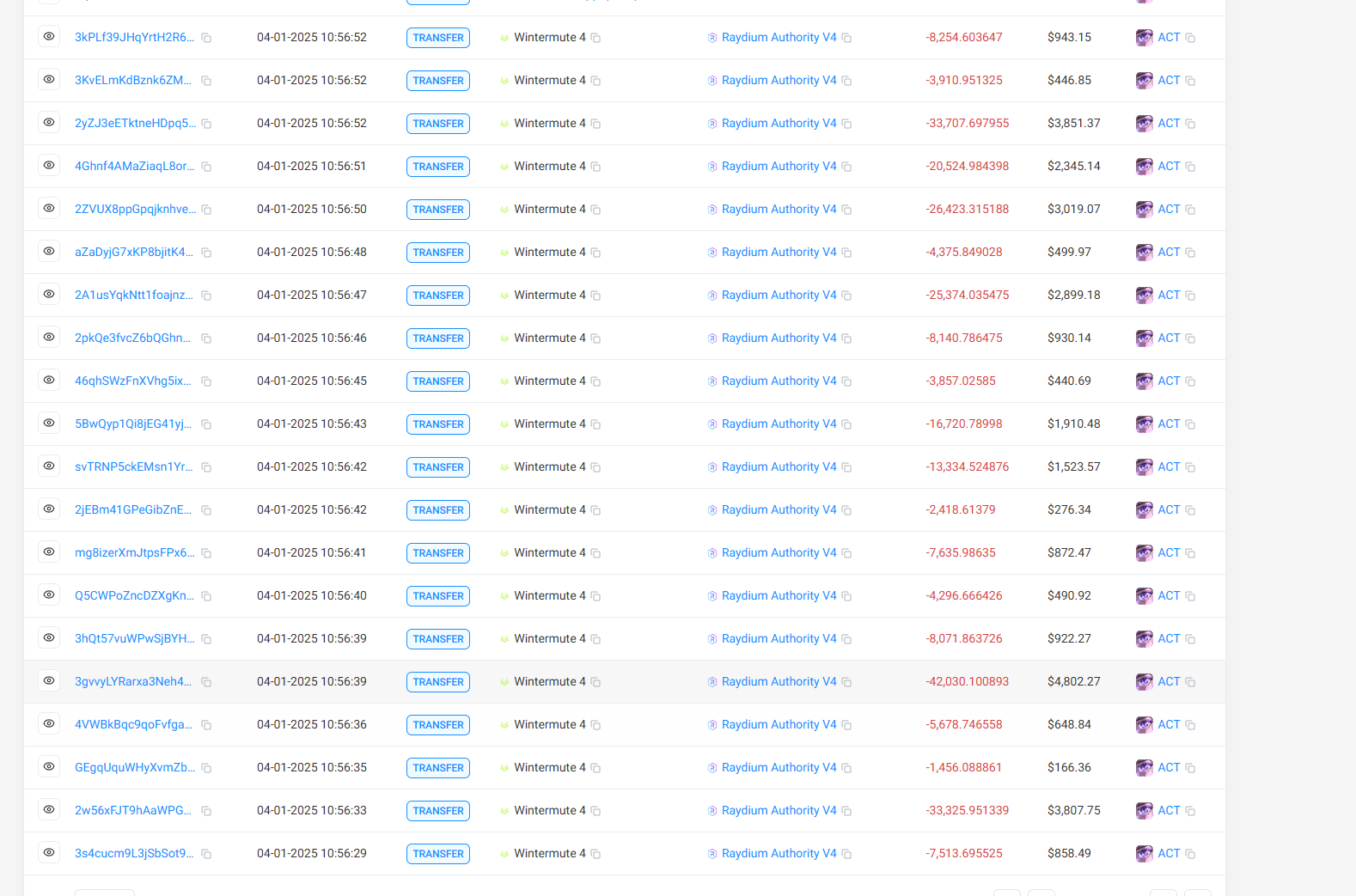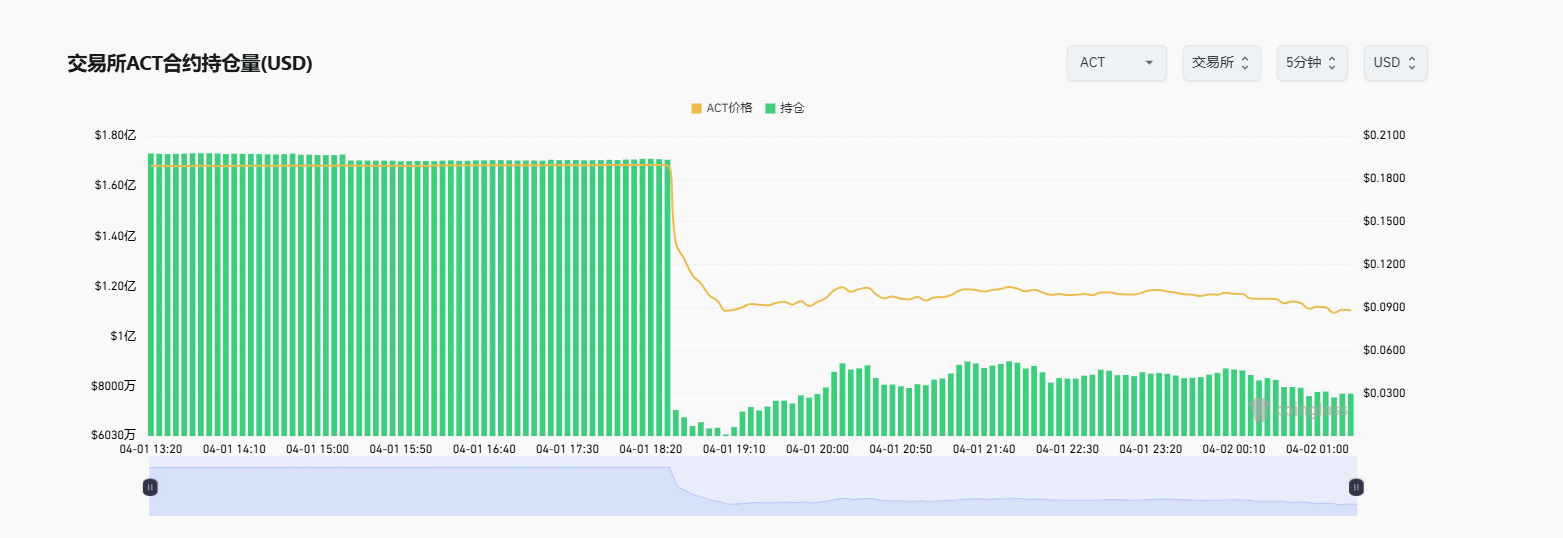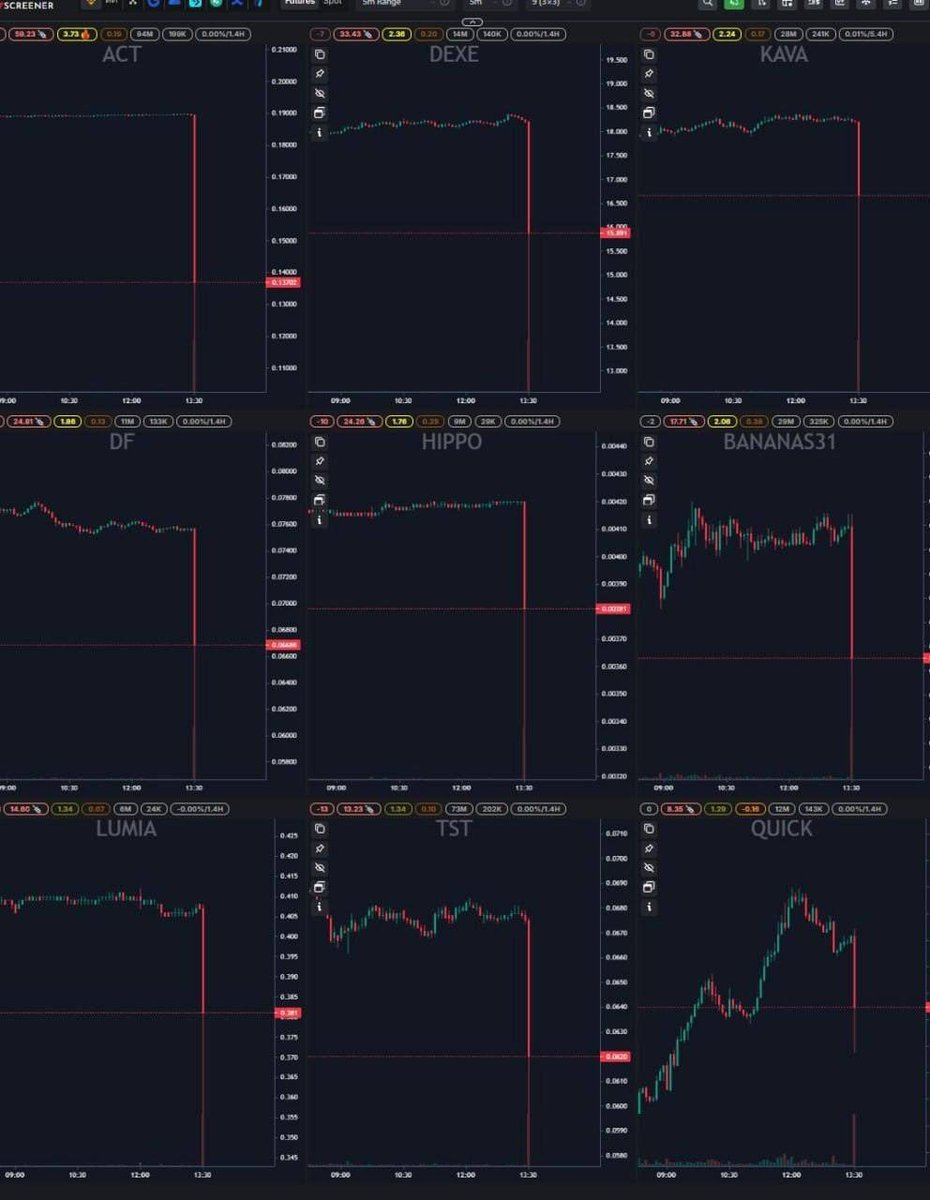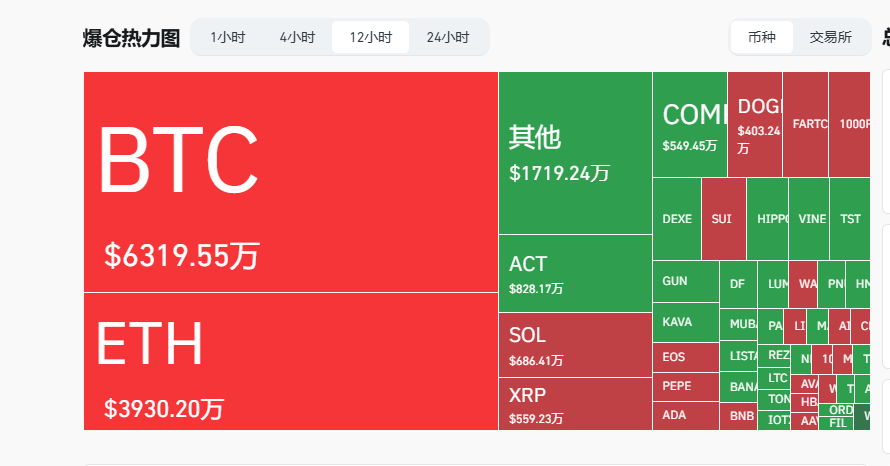Author: Frank, PANews
A routine adjustment of contract rules by Binance unexpectedly exposed the most vulnerable blemishes in the crypto market.
On April 1, the flash crash of low market cap tokens like ACT, which collectively halved in value within half an hour, brought the exchange's risk control mechanisms, market maker algorithm strategies, and the fatal flaws of the MEME coin ecosystem into the spotlight.
Although Binance urgently responded by blaming "large holders selling off," the dramatic evaporation of 75% of contract positions, the precise synchronization of price fluctuations across multiple tokens, and the mysterious on-chain sell-off by market maker Wintermute after the crash all revealed deeper industry risks—at a time of weak liquidity, the exchange's attempts to patch systemic risks may have become the last straw that broke the market.
Multiple Tokens Halve in Value Within Half an Hour
At 15:32 on April 1, Binance announced adjustments to the leverage and margin tiers for several USDT perpetual contracts, involving trading pairs such as 1000SATSUSDT, ACTUSDT, PNUTUSDT, NEOUSDT, and NEOUSDC. The adjustments mainly involved changing the position limits and leverage margin ratios for these tokens. For example, the position limit for ACT was reduced from a maximum of $4.5 million to $3.5 million. The announcement indicated that the adjustment would take effect at 18:30.

At 18:30, ACT plummeted from $0.1899 to $0.0836 in just 36 minutes, a drop of 55%, sparking intense market discussions.
Almost simultaneously with ACT, several low market cap tokens on Binance, including TST, HIPPO, DEXE, and PNUT, experienced varying degrees of flash crashes, with declines generally ranging from 20% to 50%. Market data showed that the time point of 18:30 became the starting point for the sharp decline in prices of multiple tokens, indicating a clear synchronization that extended beyond a single project.
Specifically, this adjustment reduced the maximum position size that could be held under the leverage multiplier. For example, if previously you could hold tokens worth $1 million with a certain leverage, the new rules might limit you to a maximum of $800,000. If users did not actively close their positions, the system would forcibly liquidate excess positions at market price when the rules took effect. This would lead to a significant drop in contract prices in a short time, triggering a cascading effect.
This led to a flurry of discussions on social media, with @terryroom2014 pointing out, "At 18:30, Binance's contract positions plummeted, and the exchange actively liquidated large holders, causing the price crash"; @yinshanguancha believed, "Market makers were forcibly liquidated due to insufficient margin, and the rule adjustment was the trigger." Most users pointed their fingers at Binance's rule adjustments, believing that lowering the position limits triggered forced liquidations, leading to panic selling and a market cascade effect.
Some users speculated that this was due to the market maker for ACT actively dumping, with @Web3Tinkle noting that the holding amount of ACT on Binance dropped by $73 million in just 15 minutes, implying that the project team and market makers were quickly offloading to cash in on the market.
In response, Binance co-founder He Yi stated during an interaction on X platform that regarding whether ACT's crash was caused by Binance's modification of contract rules, He Yi replied, "The team is refining details to prepare a response."
About two hours later, Binance released a preliminary investigation report regarding the incident, stating that the drop in ACT was mainly due to three VIP users and one non-VIP user selling approximately $1.05 million worth of spot tokens in a short time, which caused the price drop and led to declines in other tokens. In summary, Binance's response attributed the short-term crash primarily to large holder sell-offs, rather than the adjustment of rules by Binance.
Is the Exchange's Risk Control "Overcorrecting" or Are Market Makers Liquidating for Self-Preservation?
This market flash crash inevitably brings to mind the recent incident where Hyperliquid faced a lightning strike. On March 26, the decentralized exchange Hyperliquid was nearly faced with over $10 million in losses due to traders exploiting liquidity design loopholes to offload massive short positions by withdrawing margin.
Perhaps influenced by the Hyperliquid incident, Binance attempted to mitigate risks by lowering contract parameters for low market cap tokens, but unexpectedly triggered market landmines in the process.
In addition to Binance's rule adjustments seemingly being the trigger, market maker Wintermute has also been suspected of being the instigator. On one hand, Binance's rule adjustments primarily affected the market maker community. @CnmdRain analyzed, "This adjustment particularly impacts market makers (MM) because they typically rely on high leverage and large positions to maintain market liquidity and earn spread profits."
Previously, it was speculated that Wintermute might be the market maker for ACT (having received 9.482 million ACT tokens from the ACT community wallet in November 2024), and after ACT's crash, Wintermute withdrew multiple batches of ACT tokens from Binance and sold them on-chain.


In response, Wintermute founder Evgeny Gaevoy stated that the company did not participate in the leading operations of the ACT and other MEME coin crashes, but rather engaged in arbitrage on the AMM liquidity pool after the price volatility. He emphasized that Wintermute is not responsible for triggering this market fluctuation and is currently monitoring the event's subsequent developments.
Faced with this uproar, the ACT project team also responded, stating that they have initiated an investigation and are collaborating with relevant parties to address the situation, while also formulating a response plan with trusted partners.
Can the 75% Position Evaporation Be Explained by "Large Holder Sell-Off"?
At this point, all parties related to the flash crash incident seem to have responded promptly and distanced themselves from responsibility. However, many questions remain.
First, Binance's preliminary investigation report seems to lack credibility. The report claims that the drop in ACT tokens was related to the sell-off of large amounts of ACT tokens by three VIP users and one non-VIP user. However, this does not mean that the drop in every token was driven by similar user sell-offs. For ACT tokens, user sell-offs may be the direct cause of the drop, but the underlying reasons for the declines in multiple tokens seem to be connected to this rule adjustment.
CoinGlass data shows that at 18:30, Binance's ACT contract positions plummeted by 75%, and other tokens mentioned in the adjustment announcement also experienced similar situations, which is difficult to explain as being solely due to individual large holder spot sell-offs.


Second, this drop does not seem to be entirely caused by the rule adjustments. From the trends of several tokens, ACT experienced the largest drop, while other adjusted tokens like 1000SATS also saw declines, but the extent was far less dramatic than ACT's. Moreover, another token that experienced a significant drop, DEXE, was not one of the tokens adjusted this time. Tokens like MEW, which were also listed in the adjustment, did not drop but instead saw an upward trend.
Third, was Wintermute's exit a coincidence or intentional? While ACT was crashing, Wintermute sold off multiple MEME coins it held, which also experienced varying degrees of flash crashes. Some social media users speculated that the main reason for this drop was that Wintermute's algorithmic trading bots encountered issues due to the rule changes.
Overall, this brief flash crash seems to be more comprehensively explained as the adjustment of position rules for certain token contracts by Binance being the trigger, causing algorithmic trading bots of some market makers like Wintermute to fail to adjust in time.

However, regardless of the specific cause of this flash crash, the market/users are always the ones who pay the price.
According to Coinglass data, after the ACT flash crash, $8.71 million in ACT contracts were liquidated, ranking third across the network (only behind Bitcoin and Ethereum). Not only that, those holding spot tokens also suffered a halving of their assets, and it seems difficult to recover in a short time.

In summary, the deeper reasons for this flash crash include the following points. First, after the Hyperliquid incident, exchanges began to pay attention to the risks of whale manipulation in the market, leading to adjustments. This was initially a good thing, but unexpectedly caused another cascade. Second, due to the cooling of the MEME market, related tokens became weak and sensitive in terms of trading depth and sentiment. Therefore, once there were transactions beyond the norm, it would expose the reality that MEME coins lack value support.
This "April Fool's Day scare" in the crypto market, worth tens of millions of dollars, ultimately concluded with the exchange, market makers, and project teams tacitly "cutting responsibility." However, the warnings buried within are far more alarming than they appear on the surface; this flash crash may not have a true "culprit," but it has ripped open the most authentic survival rules of the crypto market: in the intricate system built by institutions and whales, retail investors often become passive bearers of systemic fluctuations.
免责声明:本文章仅代表作者个人观点,不代表本平台的立场和观点。本文章仅供信息分享,不构成对任何人的任何投资建议。用户与作者之间的任何争议,与本平台无关。如网页中刊载的文章或图片涉及侵权,请提供相关的权利证明和身份证明发送邮件到support@aicoin.com,本平台相关工作人员将会进行核查。




